The curves (a),(b),(c) and (d) show the variation between the applied potential difference (V) and the photoelectric current (i) , at two different intensities of light (I1>I2). In which figure is the correct variation shown ?
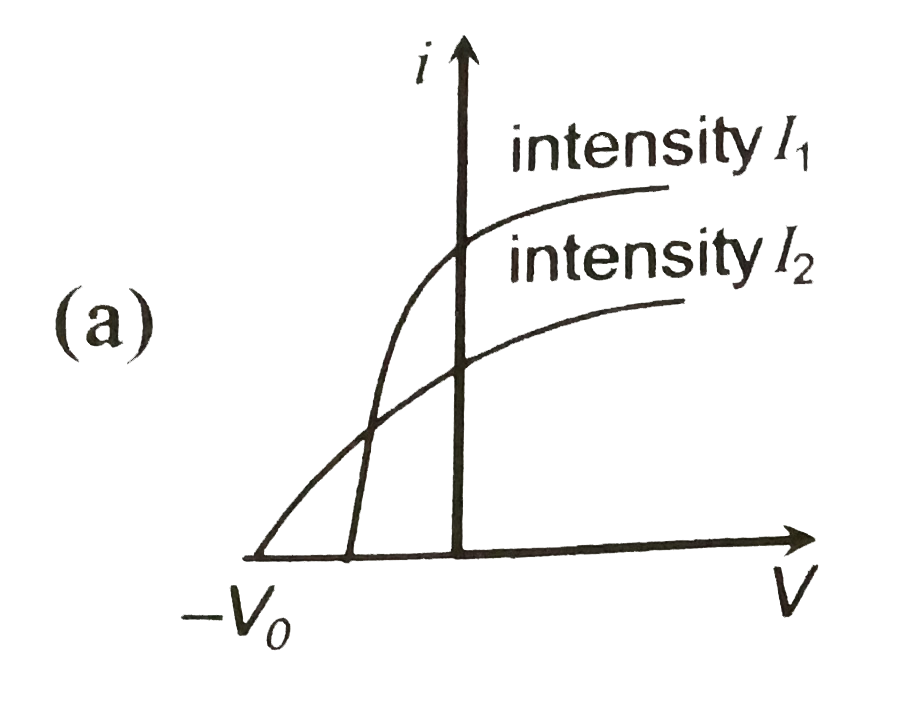

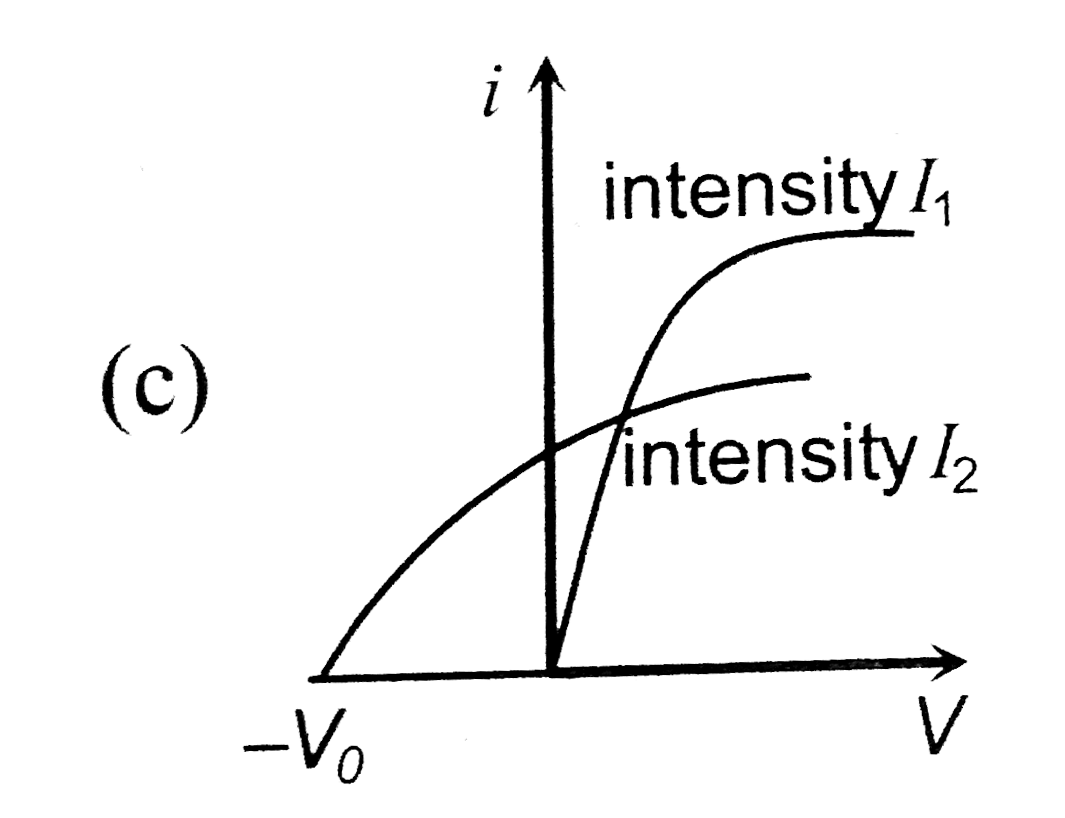
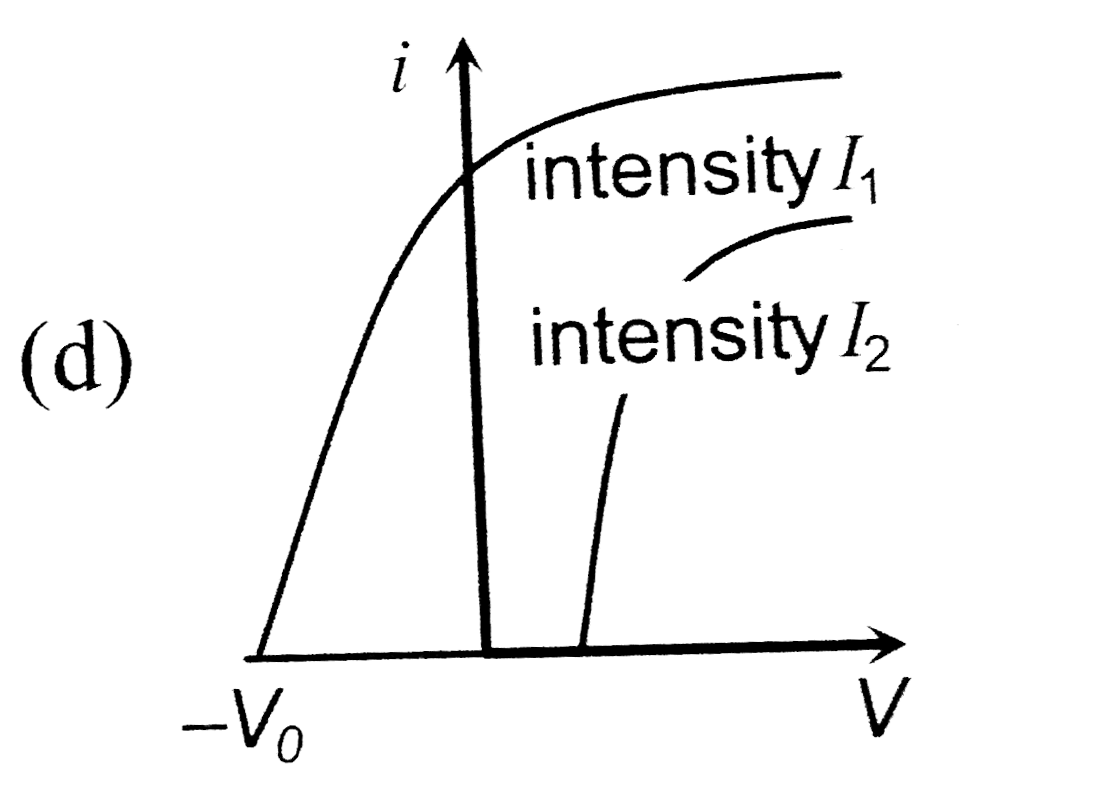
The correct Answer is:B
I1>I2 (given ) ⇒i1>i2 (∵i∝I)
and stopping potential does not depend upon intensity . So its value will be same (V0).
Topper's Solved these Questions
- BOOK - A2ZCHAPTER - DUAL NATURE OF RADIATION AND MATTEREXERCISE - X-Rays45videos
DUAL NATURE OF RADIATION AND MATTER
- BOOK - A2ZCHAPTER - DUAL NATURE OF RADIATION AND MATTEREXERCISE - Problems Based On Mixed Concepts42videos
DUAL NATURE OF RADIATION AND MATTER
- BOOK - A2ZCHAPTER - DUAL NATURE OF RADIATION AND MATTEREXERCISE - Photo Momentum Energy30videos
DUAL NATURE OF RADIATION AND MATTER
- BOOK - A2ZCHAPTER - CURRENT ELECTRICITYEXERCISE - Section D - Chapter End Test29videos
CURRENT ELECTRICITY
- BOOK - A2ZCHAPTER - ELECTRIC CHARGE, FIELD & FLUXEXERCISE - Section D - Chapter End Test29videos
ELECTRIC CHARGE, FIELD & FLUX
Similar Questions
From the following graph of photocurrent against collector plate potential for two different intensities of light I1andI2 one can , conclude
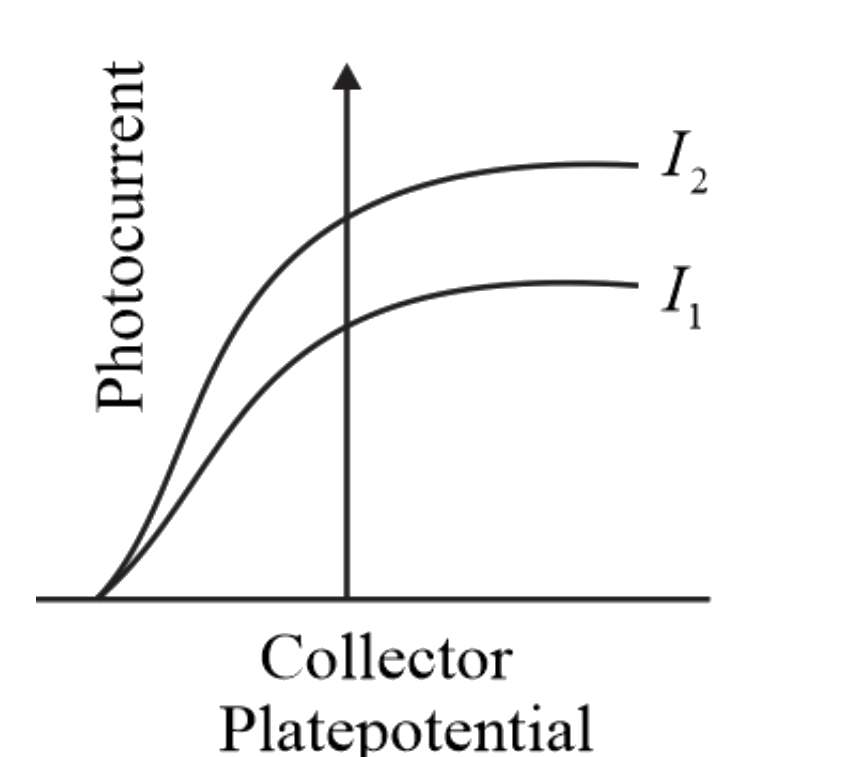 View Solution
View SolutionPlot a graph showing the variation of photoelectric current with anode potential for two light beam of same wavelength but different intensity.
View Solution
Knowledge Check
- Question 1 - Select One
The curve between current (i) and potential difference (V) for a photo cell will be
A B
B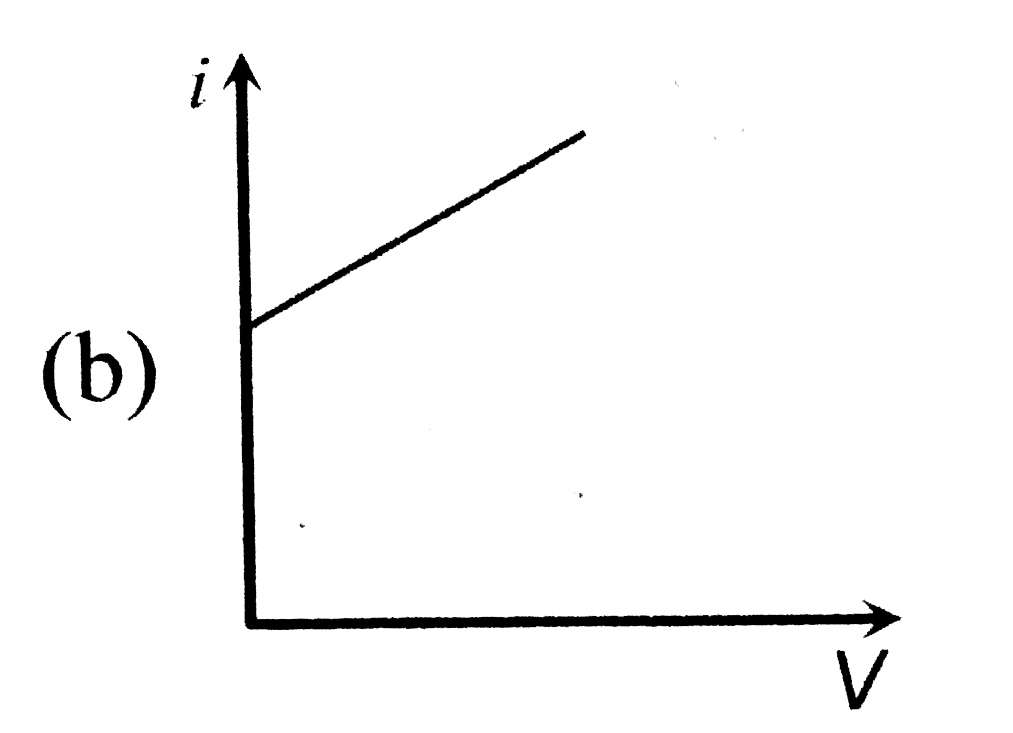 C
C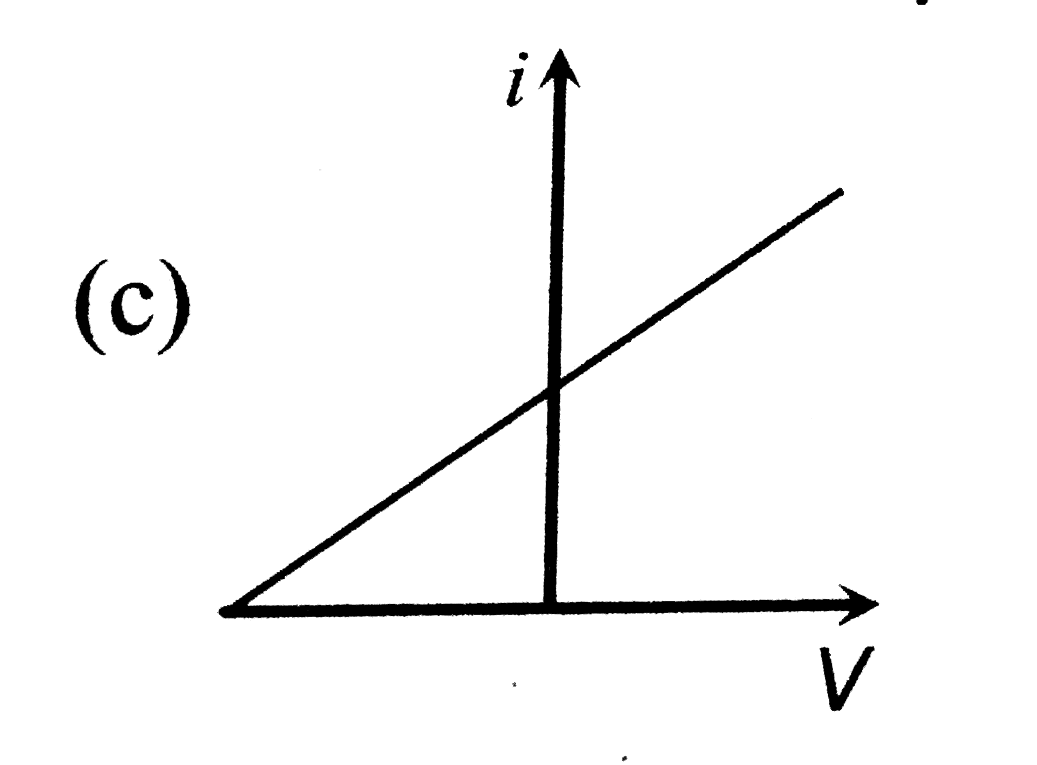 D
D
- Question 2 - Select One
For a metallic wire, the ratio Vi(V=applied potential difference and i= current flowing)is
Aindependent of temperatureBincreases as the temperature risesCdecreases as the temperature risesDincreases or decreases as temperature rises depending upon the metal - Question 3 - Select One
For a metallic wire, the ratio Vi(V=applied potential difference and i= current flowing)is
Aindependent of temperatureBincreases as the temperature risesCdecreases as the temperature risesDincreases or decreases as temperature rises depending upon the metal
For a metallic wire, the ratio Vi ( V= applied potential difference and i= current flowing ) is
View SolutionThe potential difference (VA−VB) between the point A and B as shown in the figure is
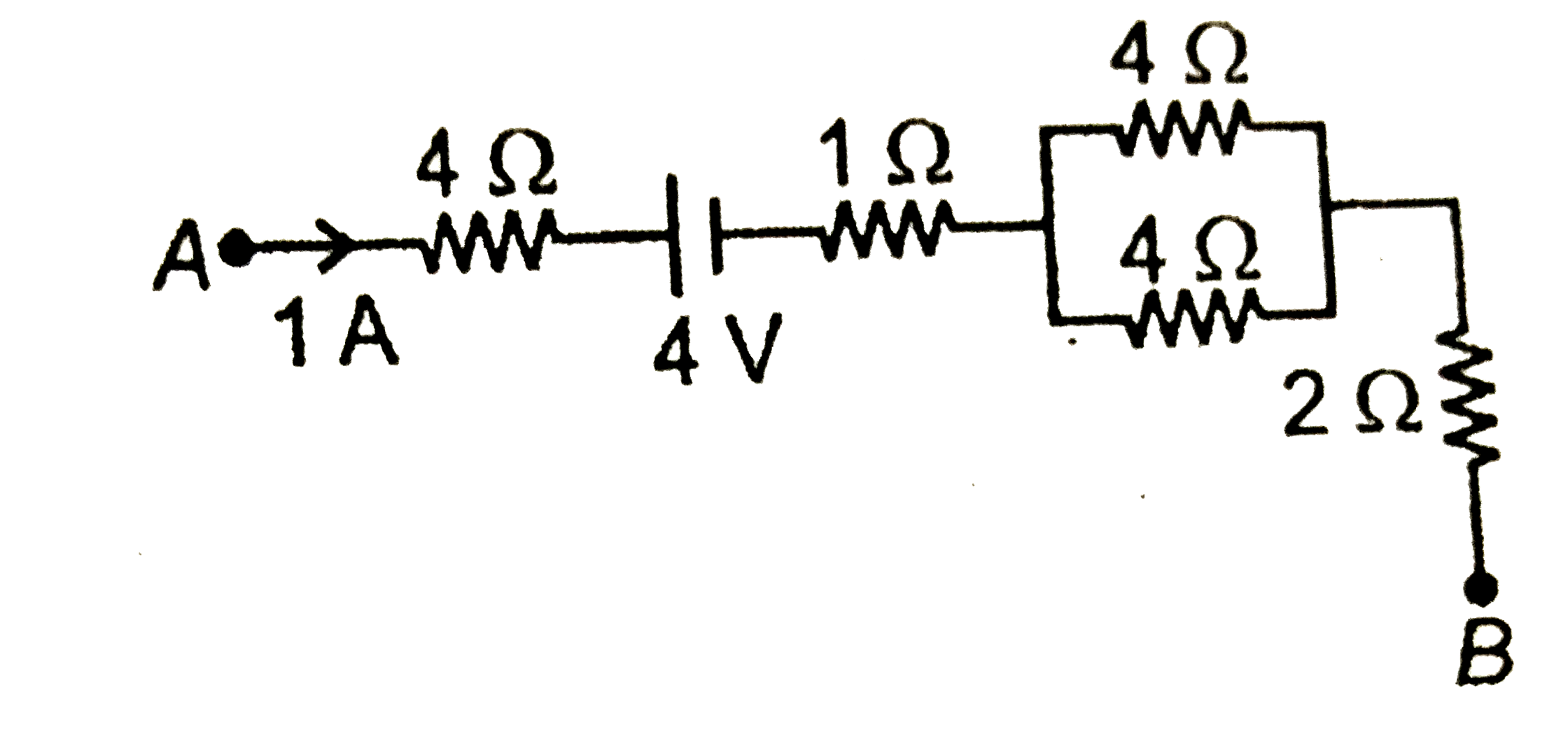 View Solution
View SolutionThe relation between potential difference (V) and current (I) was discovered by:
A) Pascal
B) Tesla
C) Newton
D) OhmView SolutionFrom the following graph of photocurrent against collector plate potential, for two different intensities of light I1andI2 one can conclude.
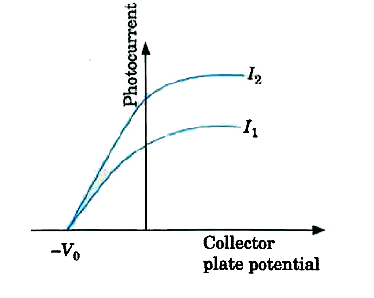 View Solution
View SolutionIn photoelectric effect , the curve between photoelectric current and anode potential V (for different frequencies ) is shown in figure , then
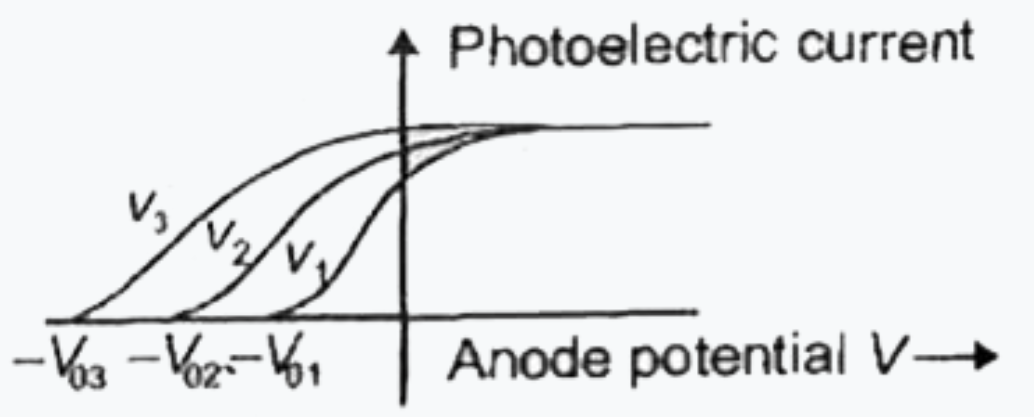 View Solution
View Solution

